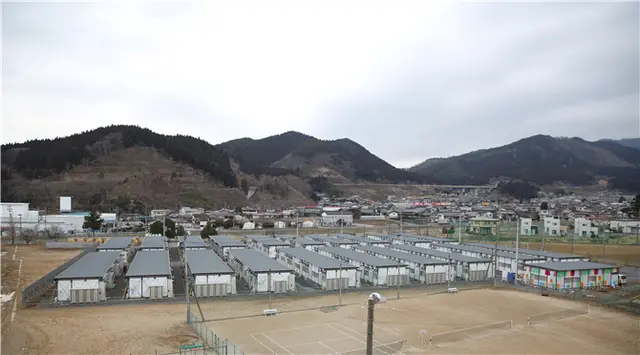As the five-year intensive reconstruction period approaches its deadline in late March, the Japanese Tohoku region devastated by a monstrous earthquake-triggered tsunami on March 11, 2011 is still struggling to be revitalized, with a declining population making the huge projects ever harder to complete.
According to a recent survey by the Japanese Reconstruction Agency, the number of evacuees after the disaster stood at 174,471 as of last month, compared to about 470,000 five years ago. However, of those currently displaced, over 70 percent are from the Tohoku area, which groups Iwate, Miyagi and Fukushima prefectures, and many of those who are no longer evacuees have decided to stay in other places outside the region.
"People are moving out of Ishinomaki. It is a problem the city now faces, although the city office tried to implement measures, such as to build a nice environment and increase the number of childcare facilities, to stop the decreasing population. It is difficult as the city doesn't have much money," Richard Halberstadt, chief of the Ishinomaki Community and Information Center (ICIC), told Xinhua.
Halberstadt, a British national who has lived in the city for more than a decade and teaches English in a university in Ishinomaki, added that compared with the pre-disaster population, Ishinomaki has seen a reduction of about 12,000 people, or 11.3 percent, in its total population and many of those who left decided to stay with their families in other cities, or have found new accommodation in the places they were evacuated to after the earthquake and tsunami.
Ishinomaki was the closest city to the epicenter of the 9. 0-magnitude earthquake and suffered great damage after the tsunami, with some 4,000 lives being lost or unaccounted for in the small city that also saw 50,000 people evacuated.
Toshiko Saito, an ICIC representative, said that shops and commercial area are shrinking in the downtown area due to the huge deficit, adding that although the local government built a new seafood market, as yet, there is little trade and few buyers.
Tsuyoshi Okamoto, an owner of a barbershop and a restaurant, decided to reopen his shops about three months ago, saying that monthly sales revenue from his businesses could reach more than 2 million yen (17,722 U.S. dollars) before the disaster, but currently stand at less than 1 million.
"The barbershop has been running for more than five decades and we lost many regular customers in the catastrophe. The shops now rely on reconstruction workers, but it is tough to keep them operating as there are no people in the city," Okamoto told Xinhua.
Private consumption accounts for about 60 percent of Japan's gross domestic product and dynamic small and medium-sized enterprises are key to growth of the world's third largest economy. However, due to the falling population, especially the young generation, consumption in the Tohoku area has been particularly weak in recent years, forcing many small businesses to close.
Both the town of Minamisanriku and Kesennuma city in Miyagi Prefecture were severely damaged by the tsunami and related reconstruction projects and their local economies are pretty similar to Ishinomaki.
Visitors to the disaster-affected regions have decreased gradually in the past five years and shopping arcades in the cities are desolate, according to Keiko Sasaki, head of the Shizugawa branch of the Minamisanriku Support Center for Disaster Sufferers, who added that the latest census showed an about 30 percent drop in total population in the small town.
"The situation is getting worse and there will be about 40 percent people in Minamisanriku who will move out. As far as I can see, there are about 1,000 households who have left the town and only about 10 percent of the evacuees have returned home," Sasaki, whose house was washed away in the disaster, told Xinhua. She also said that she will move to Ishinomaki to live with her daughter when the temporary housing she now stays in is dismantled.
Tsukamoto, who runs a grocery shop in a temporary shopping arcade in Kesennuma, complained about the difficulties of running the business due to the falling number of visitors, reconstruction workers and people who live in the city, saying that he sometimes stocks lots of fresh vegetable and fruits before a tour group's visit, only to see them never showing up.
According to a survey released earlier this month by a local newspaper Kahoku Shimpo, the population in 2015 decreased in 26 cities and towns that were affected by the disaster in Miyagi Prefecture, but Sendai, the capital city of Miyagi Prefecture, however, witnessed an increase of over 36,000 people, or 3.5 percent of the city's total population.
Some villages and towns in Fukushima Prefecture such as Futaba or Namie saw entire populations evacuated due to the Fukushima Daiichi Nuclear Power Plant disaster, triggered by the tsunami five years ago. Decontamination work is still underway in the prefecture, with the fear of radiation still the main factor weighing on evacuees' decisions to return home.
The government launched several large projects in Kesennuma trying to attract more young people to work in the city, but the jobs are typically "3D" work -- dirty, dangerous and demeaning -- which young people definitely have no interest in, a local resident with her daughter told Xinhua in a restaurant.
"I thought about returning, but..." she stammered, unable to finish her sentence, a disconsolate smile doing little to hide a torrent of raw emotion behind her eyes, but, enough to indicate that this conversation was over.
 简体中文
简体中文




